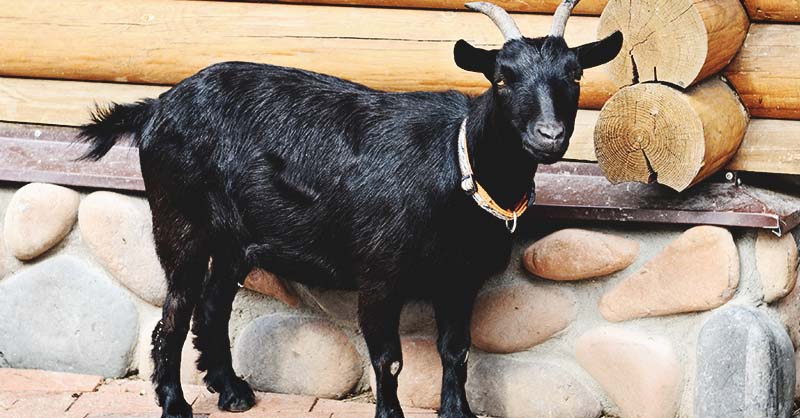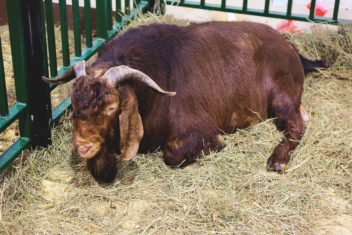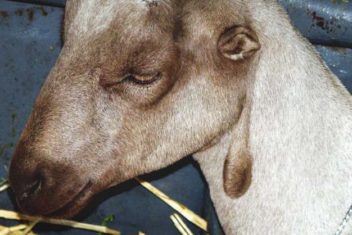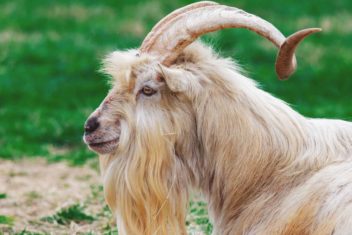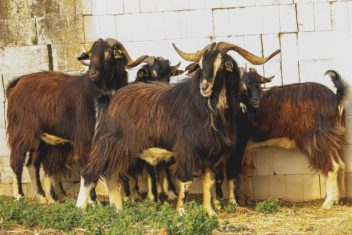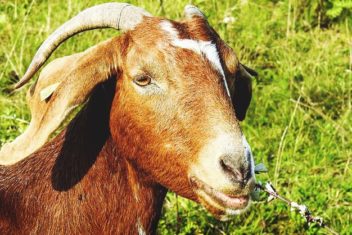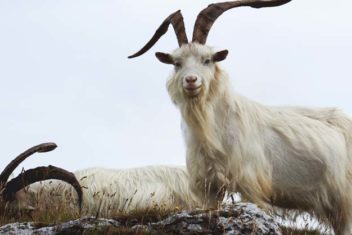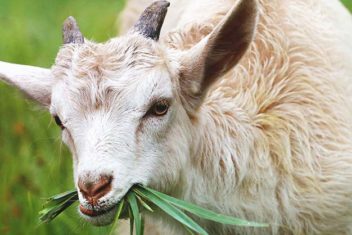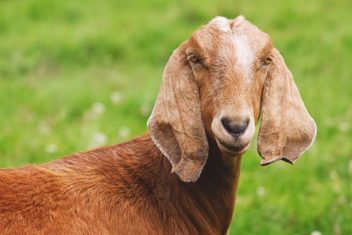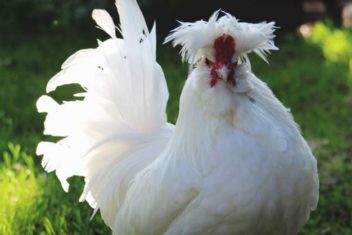The Black Bengal goat is a meat goat breed all the way from Bangladesh. They have been studied from Asia to Pennsylvania for their efficiency, parasite resistance, and high fertility rate.
This goat breed is native to west Bangladesh, making up 90% of the goat population. Not much is known about its history, making them a somewhat mysterious breed.
What we do know is this small breed is a thriving business enterprise for the underprivileged in Bangladesh. Black Bengal goats’ small size makes them economical to care for and their delicious meat is highly prized in Bangladesh and around the world.
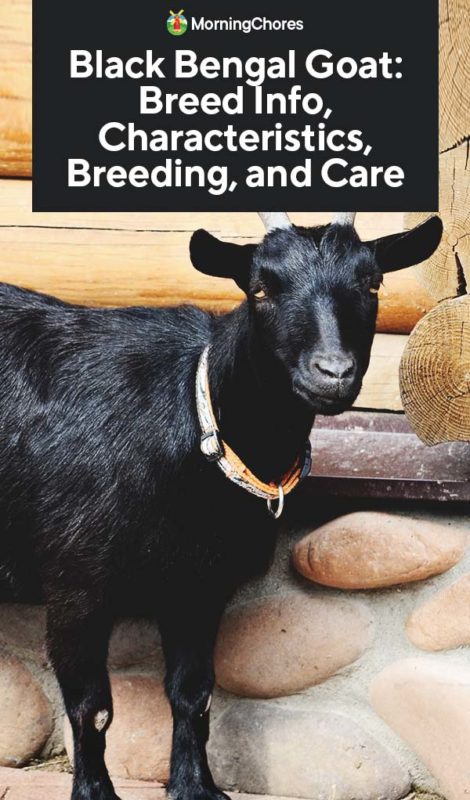
Breed Standards of The Black Bengal Goat
1. Height and Weight
These little goats border on being smaller than Pygmy goats. Bucks average about 55 lbs. and 22 inches at the withers (top of the shoulders) and does come in about 44 lbs. and 15 inches at the withers.
2. Color
Despite the name, Black Bengal goats actually come in an array of colors including black and white markings, gray, brown, and even markings similar to Alpines and Oberhaslis.
3. Other Breed Specific Standards
There are no breed associations for Black Bengal goats. That being said, researchers commonly agree on certain qualities, such as a deep body, shorter legs, a wide, almost triangle frame signaling good reproductive quality, and a short, glossy coat.
Typical Characteristics
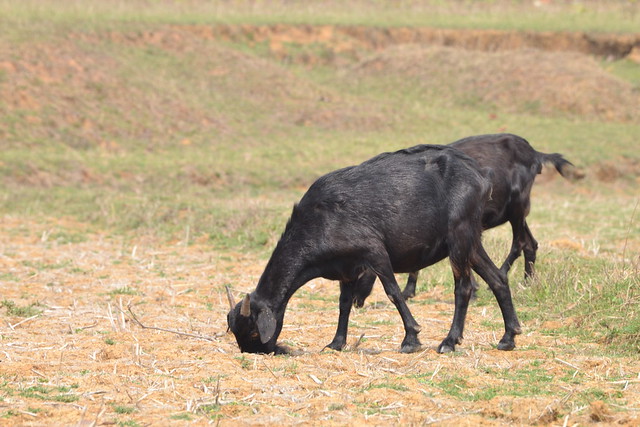
Black Bengal goats are unique with stunning qualities which include high-quality meat, leather potential, parasite resistance, and laid back personalities.
1. Meat Production Details
Researchers state a Black Bengal buck yield about 57% of their live weight in meat. Does yield a little less at 52% making them less preferred for meat selection. Twelve months is considered to be the best age for harvesting Black Bengal goats.
2. Leather Production Potential
Beyond their meat production, Black Bengal goats also have good skin for making quality leather products.
3. Hardiness
Hardiness is one of the Black Bengal goats’ star quality. In Bangladesh, they require almost no additional fodder while forging the native landscape. This is what makes them such an economical asset.
They also seem to adapt well to other climates outside of Bangladesh.
4. Temperament
Black Bengals goats are easy-going companions but need a gentle, loving hand to bring out their friendly side. Like most livestock, they will blossom into friendly, curious creatures if they receive daily care and attention.
Breeding Black Bengal Goats
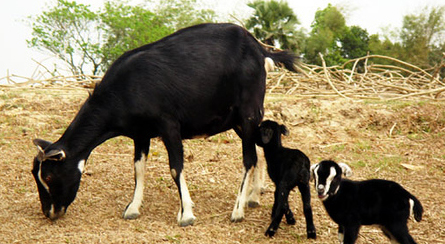
1. Maturity
Black Bengal goats mature quickly. Bucklings are considered ready to breed at six months and does at about 9-10 months. Full maturity for both bucks and does is typically reached at about a year old.
2. Mating Season
Like other meat goats, Black Bengals can be bred year-round. Does cycle every 18-21 days and are known for a very high conception rate.
3. Kids
Despite their small size, Black Bengal does still give their larger cousins a run for the money. One Black Bengal doe can carry 1-3 kids at a time and some say she can kid twice a year with proper nutritional support.
Caring For the Black Bengal Goat
1. Feeding and Nutritional Needs
The Black Bengal goat forage well in their native country, requiring minimal grain feedings. Various studies show Black Bengals thriving on intensive grazing, displaying that even this hardy breed does best when they have fresh forage.
In addition to forage, Black Bengal goats will also need fresh water, appropriate minerals, and high-quality hay during the winter and early spring.
2. Housing and Fencing
A small, draft-free house is best for protecting Black Bengal goats from severe weather. They also need protection from coyotes, bobcats, wild dogs, and large birds of prey even more than other goats since they are so small. In addition to enclosed housing at night, a tall fence will serve you well to keep them in and keep predators out.
3. Health Issues and Care
– Parasites
Black Bengal goats are very hardy and parasite resistant. In Bangladesh, they range the countryside, which naturally disrupts the parasite life cycle.
Homesteaders can copy nature’s pattern with methods like rotational grazing. Black Bengal goats’ are ideal for a rotational grazing situation since their small size makes them easy to handle and move.
– Grooming
Black Bengal goats’ short coats make their grooming needs very low. Weekly brushing and an occasional bath with gentle soap and warm water will be more than adequate.
Black Bengal goats will also need their hooves trimmed every 4-6 weeks and their ears checked for ear mites.
– Training
Black Bengal goats respond well to gentle training. It’s always a good idea to train goats to a lead rope which is best begun when the kid is about 6-8 weeks old.
Alternative Breeds
While Black Bengal goats are fascinating there are not many educational resources available about them. They also have a very small stock selection in the United States.
If you find the Black Bengal’s size attractive, Pygmy goats are very similar to Black Bengal goats in both size and meat production.
The main differences are Pygmies aren’t as hardy or parasite resistant. Yet, if you want a breed that has the Black Bengal’s size, Pygmies might be the ones for you.
Did You Know?
Black Bengal goats play an important part in defeating poverty in their native home of Bangladesh. 63% of Bangladesh’s population works in industry and agriculture, with many being underemployed.
The Black Bengal goats, with their low feed-to-meat ratio and high fertility, provide many with not only a way to feed their own families, but also with a commodity that both sells and replenishes itself as well.
Conclusion
The Black Bengal goat is disease resistant, economical, have a high food-to-meat conversion, and are small enough for even women and children to easily handle.
The Black Bengal goat is a tiny goat with many remarkable traits. Beautiful, calm, low-cost and disease resistant they are an ideal homestead animal and fascinating case study of a low-cost, efficient, and economically profitable goat.

